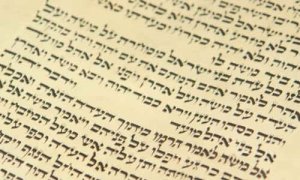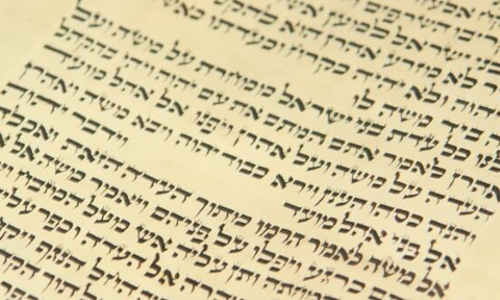
Note: The Shabbos Torah Reading is divided into 7 sections. Each section is called an Aliya [literally: Go up] since for each Aliya, one person “goes up” to make a bracha [blessing] on the Torah Reading.
1st Aliya: The Parsha begins with the Mitzvah of Shabbos and the penalty for her transgression. Note that Pasuk 35:5 is classic proof of the Oral Law. Those who deny the Oral Law must explain the literal translation of this verse to prohibit having any burning flame on Shabbos. This would forbid the use of lights, heat, and even Shabbos candles! It is the Oral Law which teaches us that the G-d’s prohibition was directed at lighting a fire, not having a fire. Moshe asked the Bnai Yisroel to donate the time, talents, and materials for the construction of the Mishkan. The Bnai Yisroel responded with unbridled enthusiasm.
2nd Aliya: Talents and materials were donated and Betzallel and Oholiav were appointed as chief architects and artists. The response to Moshe’s appeal was so great that Moshe had to command the people to stop their donations! (see, miracles do happen!) The outer coverings of the Mishkan and the inner tapestries are detailed. The beams of the Mishkan, the Aron Hakodesh, and the Shulchan – Table are described.
3rd & 4th Aliyot: The Menorah and the inner Golden Altar are described. The outer ramped Altar, the Washstand, and the Mishkan’s surrounding enclosure are detailed. Pekudei begins with an accounting of the materials used in the construction of the Mishkan. (gold = 4,386.5 lb./ silver = 15,088.75 lb./ copper = 10,620 lb.)
5th & 6th Aliyot: The Kohein Gadol’s breastplate and vest are described. The remaining garments of the Kohein Gadol and the other Kohanim are detailed, and Moshe inspects the completed Mishkan. Moshe certifies that the entire project followed the exact details of Hashem’s instructions. Moshe blesses the workers.
7th Aliya: On the 1st day of Nissan, 2449, the Mishkan was assembled. After every vessel was properly in place, the presence of Hashem, the Shechina, descended in a cloud and filled the Mishkan.


